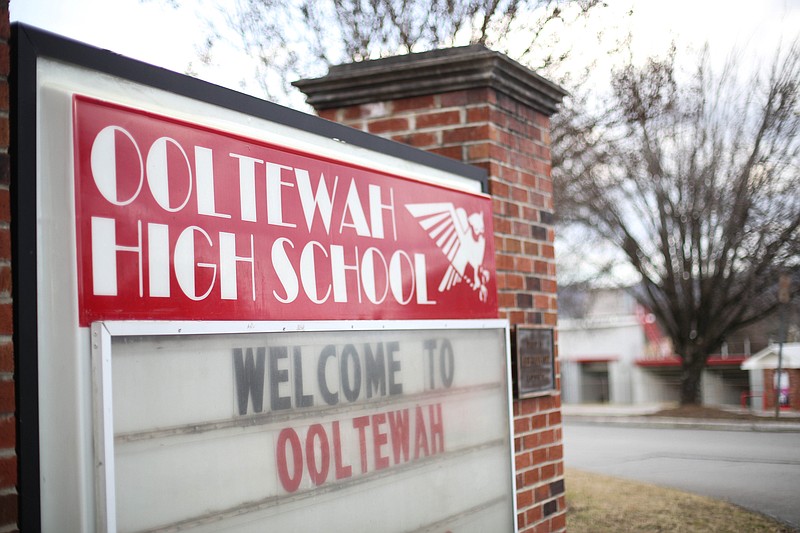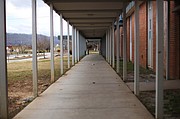STATE SUMMARIES
Unlike colleges and universities, U.S. elementary and secondary schools are not subject to national requirements for tracking student sexual assaults. But 32 states and the District of Columbia do maintain information, though it is inconsistent and sometimes incomplete, The Associated Press found.ALABAMAThe state education department received information from school districts and, in some years, schools on incidents of sexual battery by students, including actual or attempted penetration, fondling and child molestation, especially where the victim was unable to give consent. The department reported 43 assaults over the four-year period and said it generally doesn’t try to verify the information.GEORGIASchools reported annually only those incidents of sexual battery that led to suspension, expulsion, corporal punishment or placement in an alternative education program. The education department defined such behavior as unwanted oral, anal or vaginal rape and forcible intimate touching. The state reported 607 such incidents in the four-year period.TENNESSEEThe state education department tracked incidents of student sexual assault, including rape, sodomy, fondling and child molestation. It reported 462 such incidents during the four-year period.— The Associated Press
The Georgia school district said it was investigating the baseball players for "misbehavior" and "inappropriate physical contact." What it didn't reveal was that a younger teammate had reported being sexually assaulted.
Even after players were later disciplined for sexual battery, the district cited student confidentiality to withhold details from the public and used "hazing" to describe the incident.
Locally, a similar event took place on Ooltewah High School's basketball team just days before Christmas in 2015. Two 16-year-olds held down their 15-year-old teammate as a 17-year-old raped him with a pool cue, according to court testimony.
Across the U.S., nowhere is student-on-student sexual assault as common or as camouflaged as in boys' sports, an Associated Press investigation found. Mischaracterized as hazing and bullying, the violence is so normalized on some teams that it persists for years, as players attacked one season become aggressors the next.
The AP examined the issue of sexual violence in school sports as part of a larger look into the overall problem of student-on-student sex assaults . Analyzing state education records, supplemented by federal crime data, the AP uncovered about 17,000 official reports of such assaults in grades K-12 over a recent four-year period. And that number is low, because such attacks are widely underreported and not all states track them or classify them uniformly.
In the last five years alone, the AP found more than 70 sexual attacks across all types of sports in public schools - also just the tip of the iceberg, experts say. Though largely a high school phenomenon, some cases have been reported as early as middle school.
Serious injuries and trauma have resulted, records show. An Idaho football player was hospitalized in 2015 with rectal injuries after he was sodomized with a coat hanger. Parents of a Vermont athlete blamed his 2012 suicide on distress a year after teammates sodomized him with a broom.
"It's amazing to me that there hasn't been a public outcry on this to help stop it," said Hank Nuwer, a hazing historian at Franklin College in Indiana.
The acts meet federal law enforcement definitions of rape and sexual assault, but language used by schools and coaches shrouds the problem and minimizes its severity. It also can influence whether off-campus authorities hold anyone accountable.
"Language is everything," said B. Elliot Hopkins, a sports safety expert at the National Federation of State High School Associations. "If anyone knew that their kid was going to run the risk of being sexually assaulted to be part of a team, we wouldn't have anyone playing any sports."
In the Georgia case, five to eight upperclassmen on the Parkview High School baseball team near Atlanta barged into the hotel rooms of freshmen teammates during an out-of-state tournament in 2015. One boy had fingers shoved through his shorts into his rectum, according to state education disciplinary records, and two others fought off similar assaults.
In disciplinary proceedings months later, the upperclassmen didn't challenge the evidence but described what they did as "wrestling and horse playing."
A draft public statement from the Gwinnett County Public Schools initially said a player's family had reported he was "sexually assaulted," records AP obtained show. But the final version referred only to "inappropriate physical contact." When asked, district officials said that wording was "more inclusive" of the "diversity of the types of misconduct alleged."
AP also found multiple cases where coaches fostered the opportunity for misconduct through poor supervision. Others became aware of misbehavior but treated it as a team disciplinary matter. Some failed to do anything.
In the Ooltewah High School case, a culture of "hazing and abuse" was found to exist on the basketball team prior to the Gatlinburg trip, where the pool-cue rape occurred.
Coaches, who were elsewhere in the cabin where the team was staying, heard the boy scream and drove him to a hospital after seeing him bleeding. The boy needed emergency surgery to repair a damaged bladder, colon and rectal wall.
Medical staff, not the coaches, contacted authorities. Investigators said the head coach instructed players at some point to stay quiet. At the team's cabin, the head coach's wife cleaned up and threw away the boy's soiled clothing, "essentially erasing evidence of the crime," investigators said.
The head coach and other school officials said in legal responses they didn't know about the violence or seek to withhold information. The coach and his wife, who was not charged, did not respond to messages.
"If this boy had not gone to the hospital, had he not been bleeding, nobody would have known about this," said Eddie Schmidt, a lawyer representing the player's family.
Experts say players are indoctrinated to abusive team cultures when they're new, transition into bystanders seeing others harmed and sometimes become attackers themselves, feeling a form of duty to uphold team "tradition."
Some players may think enduring such acts builds team toughness, but more often, older players use sexual violence to exert dominance over newer or smaller boys vying for the roster, said Susan Lipkins, a New York psychologist and author who specializes in sports attacks.
"What's worse for a young jock than to be emasculated to the lowest level, to be like a girl?" she said.
Athletes who are sexually assaulted feel particularly pressured to keep quiet, experts say, because they fear speaking up could jeopardize a spot in the lineup they've trained years for, or risk team success by getting other players in trouble.
Amanda Jackson's son waited two years to tell her what he said he experienced as a freshman at Capital High School in Olympia, Wash.
After showering at a 2010 basketball camp, he was tackled by four upperclassmen who tried to penetrate him with their fingers, according to his deposition in the family's pending lawsuit against the school district.
"I felt like if I told someone, then I would have been, you know, excluded from the team and not able to play varsity basketball," he testified.
A psychological evaluation conducted as part of the lawsuit showed he exhibited post-traumatic stress symptoms.
"I want to get everything out there so people understand this is not normal," his mother said.
AP correspondent Emily Schmall contributed to this report.


